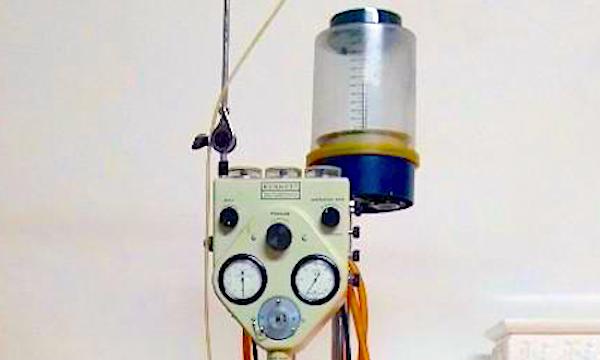SHARE
Mechanical Ventilators for COVID-19: Improve the Selected Solution
This is Round 2 of the Mechanical Ventilators for COVID-19 patients Challenge. Can you come up with improvements for the solution selected in Round 1?
Join the challenge (click on the button below), register, and download the complete description of this challenge and the solution.
We need to act fast, the deadline for submissions is the 3rd of April.
Once the healthcare system is forced to turn warehouses into makeshift intensive care wards, as the images from Italy, each ward will have hundreds of patients, tightly organized, a rudimentary infrastructure, and healthcare staff with below-average respiratory care skills, and very tired/overworked.
This is not a realistic environment for an advanced skill and infrastructure-demanding ICU mechanical ventilator or a single limb homecare ventilator, which exhausts contaminants into the ambient environment. Quite evidently, we have reached emergency conditions and compromises must be made.
Real-time breath volume measurement technology is relatively complex to implement since it demands very fine manufacturing tolerances. Also, the blending of air and oxygen accounts for a component count that is in short supply or currently cannot easily be shipped across the world.
Simpler Pressure Control ventilators of the past have delivered, and are still delivering, a valuable level of therapy – without Volume Control. Pressure Control ventilation can offer a better match for the conditions in the makeshift ward.
Summary of the Mechanical Ventilators Challenge
The selected solution in Round 1 (participate in Round 2 to read the solution description), proposes a ventilation system based in the classic ventilators from the past, to be used in a 10-bed ward. This configuration is scalable to many more beds, in extended or parallel arrangements. The mechanical ventilators stand on bedside tables. The ventilators receive pre-blended gas, from one of the optional supply lines. This arrangement significantly simplifies the ventilator design. The FiO2 concentration in the supply lines is adjusted by regulating the oxygen supply pressure from the bottles. The concentration is monitored using oxygen cell technology. The monitor will signal if the FiO2 level drifts, for instance, when several patients are switched to the alternative line. This will require a technician attending to the line and adjusting the oxygen bottle regulator until the target FiO2 is met (+/-3% v/v). Read more about the design characteristics in the annex1- FredeSolution166UK (sign up and participate to access it).What we are looking for
The goal of this challenge is to make improvements to the solution described in annex1. We need to make sure that we have availability for the required components of the BOM (shown in annex2), especially valves used in medical equipment, pressure sensors, and oil-free air compressors. For this purpose, we are looking for alternative models and manufacturers that meet the requirements for every component. You can also propose alternative designs that solve availability stock constraints. In addition, you are welcome to propose further improvements or evolutions like the following:- Exhalation monitoring through airflow detection
- Replace the compressor by adequately adapted air-pushing elements like ventilation fans, etc.
- Others
Evaluation Criteria
Some improvements may be added to the main solution following these criteria:- Comply with the minimum requirements
- Component availability
- Reliability of the ventilator
- Easy to build
- Low cost
- Easy to clean/sterilize
Timeline
1st round – 1 week (3rd of April) + 2 days for evaluation by participants (5th of April). Solutions and results will be published right after, and a new round will be open to work on improvements.Prize
The goal of this challenge is to make a contribution to humanity in these trying times. There will be no cash prize. However, ennomotive will fund the building of the best prototypes for the next round.Terms
- All the solutions submitted for this challenge will be open to the public.
- Once the deadline is reached, the solutions will be visible to other participants, who will evaluate them to help pick the best ones.
- New rounds may be open to progressively improve the ICU ventilator model and request the prototypes.
